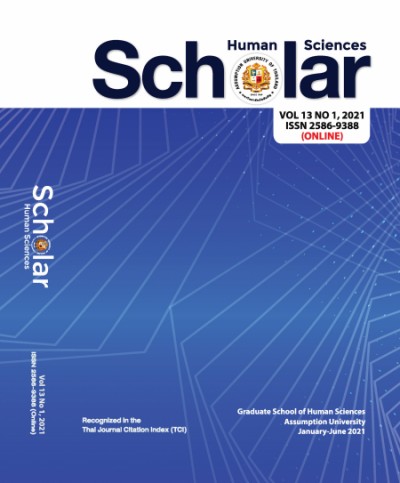The Relationship of Teachers’ Perception Towards Organizational Climate and Their Retention in Guiyang Qingzhen Boya International Experimental School, Guizhou Province, China
Keywords:
Teachers’ Perception, Organizational Climate, Teachers' PerceptionAbstract
The main purpose of this study was to determine the relationship of teachers' perception towards organizational climate and their retention in Guiyang Qingzhen Boya International Experimental School, Guizhou Province, China. The research surveyed a total of 80 full-time teachers in Guiyang Qingzhen Boya International Experimental School. The researcher used Mean and Standard Deviation to analysis the teachers’ perceptions toward the level of organizational climate and their retention. Pearson Product Moment Coefficient of Correlation was used to test the relationship between the two variables. The result of this study showed that teachers in the school perceived a high level of organizational climate and their perception towards their retention. Pearson correlation tested that there was a relationship between teachers’ perception towards organizational climate and their retention.
References
Ashkanasy, N. M., Wilderom, C. P., & Peterson, M. F. (2000). Handbook of organizational culture and climate. Sage.
Barth, R. S. (1990). Improving schools from within: Teachers, parents, and principals can make the difference. Jossey-Bass Inc., Publishers, 350 Sansome Street, San Francisco, CA 94104-1310.
Bhutto, N. A., & Laghari, M. K. (2012). A comparative study of organizational climate and job satisfaction in public, private and foreign banks. Asian Social Science, 8(4), 259.
Chadha, N. K. (1992). School organizational-climate and teachers’ job-satisfaction. in international journal of psychology (vol. 27, no. 3-4, pp. 508-508). 27
Chapman, D. W., & Green, M. S. (1986). Teacher retention: A further examination. The Journal of Educational Research, 79(5), 273-279.
Creighton, T. (2004). Leading from below the Surface: Expanding the Knowledge Base in Educational Administration. Educational leadership: Knowing the way, showing the way, going the way, 12, 104.
Guion, R. M. (1973). A note on organizational climate. Organizational behavior and human performance, 9(1), 120-125.
Halpin, A. W., &Croft, D.B. (1963). The organizational climate of school. “Administrator’s Notebook”, Midwest Administration Center the University of Chicago,11(7).
Johnson, S. M., & Birkeland, S. E. (2003). The schools that teachers choose. Educational Leadership, 60(8), 20-20.
Langton, N., & Robbins, S. P. (2007). Organizational behavior: Concepts, controversies, applications. Pearson Prentice Hall.
Latif, A. (2010). Relationship between organizational climate and nurses' job satisfaction in Bangladesh, Doctoral dissertation, Prince of Songkla University.
Moran, E. T., & Volkwein, J. F. (1992). The cultural approach to the formation of organizational climate. Human relations, 45(1), 19-47.
Mullins, L. J. (2007). Management and organizational behavior. Pearson education.
Schaefer, L., Long, J. S., & Clandinin, D. J. (2012). Questioning the research on early career teacher attrition and retention. Alberta Journal of Educational Research, 58(1), 106-121.
Schneider, B., Ehrhart, M. G., & Macey, W. H. (2013). Organizational climate and culture. Annual review of psychology, 64, 361-388.
Shuanglong, W. (2016). A Study on the Organizational Climate of the School and the Influence of Self-directed Learning on Teachers' Professional Development. Teaching and Management, (6), 18.
Stelmachowicz, C. L. (1991). Teacher retention and teacher satisfaction in Lutheran secondary schools. Dissertations. 2043.
Troutt, A. (2014). Teacher perceptions of professional learning communities related to teacher retention, Doctoral dissertation, Northern Arizona University.
Wongson, N., & Ye, Y. (2018). The Relationship Between Teachers’ Perception of Instructional Leadership and Organizational Climate at Santichon Islamic School. Scholar: Human Sciences, 10(2), 188.
Woods, P. A., & Gronn, P. (2009). Nurturing democracy: The contribution of distributed leadership to a democratic organizational landscape. Educational Management Administration & Leadership, 37(4), 430-451.




